Road markings let you know what rules you should be following at any given time. Learn how to read them and they’ll tell you when you’re allowed to overtake, when you must (or mustn’t) stop and who exactly has right of way. They can also direct you into the right lane when approaching a roundabout, and keep you in a safe driving position. All pretty crucial information!
So whether you’re studying for your theory, need to brush up for your practical, or are a seasoned driver with a gap in your knowledge, we’ve put together the ultimate guide for you. We use quite a few different road markings variations we use here in the UK—but there are common themes that make learning them easier. Just take one section at a time and you’ll soon get to grips with each format.
Lines across the road
Take note of any line that’s painted across your path: with or without an accompanying road sign or signal, it indicates that you need to remain alert as you approach it — and either stop (or be prepared to stop) or give way.
Solid white lines: Stop or be prepared to stop
Stop lines at traffic lights or police controls
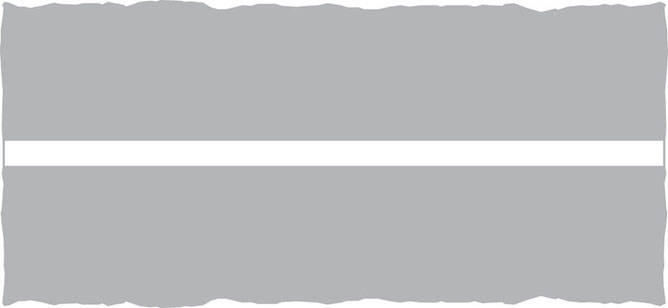
© Crown copyright (Open Government Licence)
When accompanied by a traffic light, other signal, or, less commonly, a police control, a solid white line marked across your lane shows you where you must stop if told to do so — for instance if the lights turn red.
Advance stop lines
Sometimes there will be an advance stop line, a little way short of the traffic light. Beyond it you will see an area reserved for cyclists, so they can get ahead of other vehicles. Without a green light, you’re only allowed to enter this area if you can’t stop safely before the first stop line.
Junction stop lines
Other solid white stop lines can be found before you enter certain junctions. Where this is the case, you have to come to a complete halt, check all directions for oncoming traffic, and pull out only once the road is clear. Stop lines at junctions should be accompanied by an octagonal stop sign, to really reinforce the message.
Broken white lines: give way
Junction give way lines
A double broken white line tells you you’re about to meet a major road, and that the drivers on that road have priority over you. You must therefore give way, which means to slow down and assess the situation before committing to pulling out. If the road is clear for you to join (or drive across if it’s a crossroads), you don’t have to come to a complete stop. But you must be prepared to do so if there is traffic moving across your path, or if you can’t see properly in one or either direction (a closed junction).
Roundabout give way lines
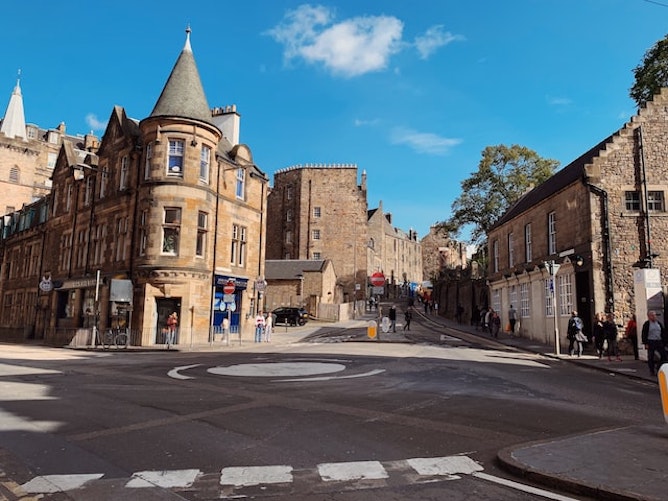
At roundabouts, you’ll usually encounter single broken white lines to mark the point at which you need to give way to vehicles from the right. The dashed lines at mini roundabouts are thicker and chunkier than those at larger roundabouts. But they essentially mean the same thing: vehicles coming from your right have priority over you.
Centre line road markings explained
Just like at junctions, there are restrictions on when you can cross road markings along the road.
Broken white centre lines

© Crown copyright (Open Government Licence)
Broken lines down the centre of a carriageway are there to separate you from traffic coming in the opposite direction. You can cross them to overtake obstacles or slower moving traffic so long as there’s plenty of space for you to do so and you can keep within the speed limit.
Line dividers
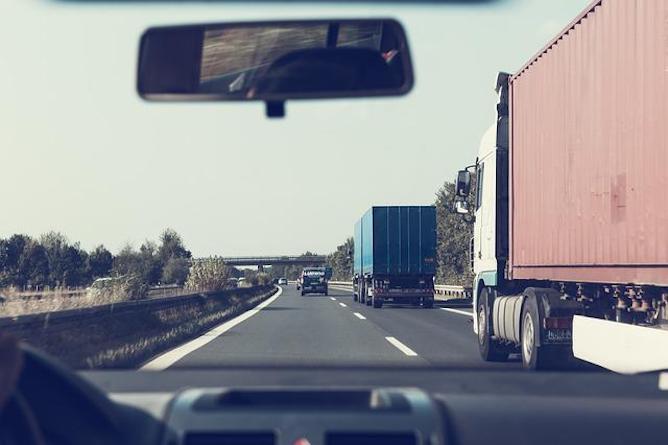
Short broken white lines can also indicate lane boundaries on dual carriageways or motorways. You must keep the car within your own lane. Remember, you should usually drive in the left hand lane in the UK — and only move right in specific scenarios, for example to overtake. Staying in the middle or right hand lane unnecessarily is called middle lane hogging, and could get you a fine.
Double white lines in the middle of the road
You mustn’t park on roads with double white lines down the centre, except to put down or pick up passengers, or load or unload goods.
Double white lines where the nearest line is broken

Where the nearest line to you is broken, you may cross the line to overtake if it’s clear and safe to do so. If you see arrows on the road — or a road sign pointing you back towards your lane — it means there’s limited time before you must get back in lane. You must not start an overtaking manoeuvre if you can’t complete it before the start of a solid white line on your side.
Double white lines where the nearest line is solid
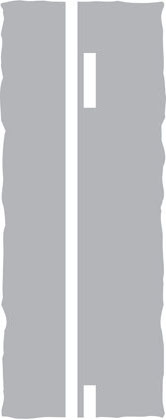
© Crown copyright (Open Government Licence)
Solid white lines indicate that it’s generally not safe to overtake. You’ll tend to see these on sections of roads with blind bends or hills. If the white line closest to you is solid, you may only cross it if you can see it’s safe to do so, and:
– You need to turn into a property or side road, OR
– You’re overtaking a parked vehicle or a cyclist, horse or road maintenance vehicle that is travelling at 10mph or less.
If you’re passing one of the road users listed above, you must give them sufficient room when you overtake. The Highway Code was updated in 2022 to list specific distances for passing certain road users:
– Cyclists: 1.5m gap (more if passing them at faster than 30mph)
– Horses: 2m gap (and under 10mph)
Double solid white lines
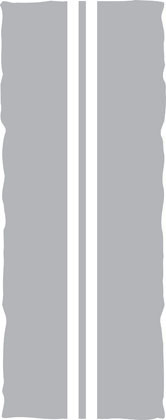
© Crown copyright (Open Government Licence)
You may only cross double solid white lines in very limited circumstances — and can receive points and a fine if your actions were unnecessary or dangerous. As above, you may only cross double white solid road markings if it’s safe, you can see the road ahead is clear, and:
– You need to turn into a property or side road, OR
– You’re overtaking a parked vehicle or a cyclist, horse or road maintenance vehicle that is travelling at 10mph or less.
Where there is a safer section of road up ahead, not marked with solid double lines, you should wait to overtake these road users there instead.
Parking Lines
Single yellow lines

© Crown copyright (Open Government Licence)
Single yellow line road markings mean that waiting and parking restrictions are in force at certain times — which will be specified on a road sign. The line applies to both the road and the pavement beyond it, so you can’t try and get around the rules that way! Learn exactly what ‘waiting’ means, and how to tell when you won’t get a ticket for pulling up on single yellows, in our guide to parking legally. Blue badge holders can usually park on single yellow lines within restricted periods for up to three hours — unless there are double yellow kerb markers (see below).
Double yellow lines
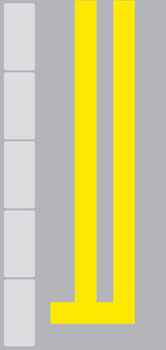
© Crown copyright (Open Government Licence)
You’re not allowed to park on double yellows at any time — except in rare exceptions indicated on road signs. Again, those with blue badges are currently exempt from this rule, and can park on them for three hours at a time.
Kerb markings

© Crown copyright (Open Government Licence)
Single yellow lines on the kerb allow loading or unloading at times specified on road signs. Double yellow lines up the kerb mean you cannot ever stop to load or unload. However, you may stop to pick up or set down passengers, so long as you don’t hang around.
Red Lines
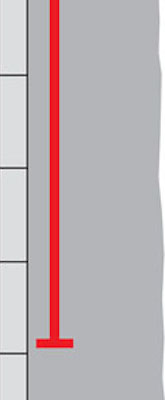
© Crown copyright (Open Government Licence)
Some places, such as areas in London, have ‘red routes’. Parking restrictions are governed by single or double red lines instead of the usual yellow: single red lines are accompanied by signs telling you when waiting is allowed; double red lines prohibit parking at all times.
Parking bay markings

© Crown copyright (Open Government Licence)
Parking areas, enclosed by broken white lines, are a common sight on residential roads. They usually have some form of parking restrictions; they may be reserved for permit holders only, you might have to buy a ticket to wait there, and there’s often a limit on how long you can stay. These might be permanent rules or only enforced on certain days or at particular times. You need to read the accompanying road signs to work out if and when you can use the bays to park your car. Parking bays with red dashed lines are sometimes found on red routes, and are only available to people loading or unloading at particular times. Take a look at nearby signs to see when they may be used, and bear in mind that they have at 20 minute time limit too
Named parking bay markings

© Crown copyright (Open Government Licence)
Some parking bays are reserved for particular vehicles, such as doctors or the police. The relevant occupants will be written on the ground, so you know not to pull up there.
Other UK road markings
Edge line
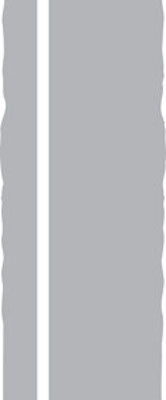
© Crown copyright (Open Government Licence)
A single white line running along the edge of the road shows you where the edge of the road lies. You should keep to the right of it; it’s easy to land into trouble if you cross the line onto the verge, particularly when travelling at speed. Sometimes the white edge line is raised so you can hear and feel if your wheels drift onto it. This should help you maintain a safe road position.
Give way triangle
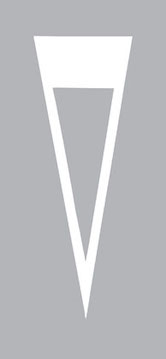
© Crown copyright (Open Government Licence)
Just as the Give Way sign is an upside down triangle, an elongated version of the shape painted on the road indicates an upcoming junction. Slow down if you see this marking, because traffic on the adjoining road has priority.
Pedestrian crossings
There are a whole range of pedestrian crossings; you can find all the different types here. In terms of UK road markings, you need to be aware of three main things:
– Stop lines: Lots of pedestrian crossings are controlled by traffic lights, so always be prepared to brake so you can come to a halt before the line.
– Zebra crossings: These distinctive crossings are characterised by wide white lines interspersed with the usual tarmac, creating a black and white striped effect. Check both directions as you come up to a zebra crossing; stop before the lines if there are any pedestrians approaching or using it.
– White zig zags: You’ll find white zig zag lines painted either side of pedestrian crossings. You mustn’t park in these areas, as your vehicle would obstruct both traffic and pedestrians’ vision.
Areas of diagonal stripes and chevrons

If you come across areas containing either diagonal stripes or chevrons (an arrowhead shape like this ^), they are there to separate traffic. There are slightly different rules depending on whether they are bordered by broken or solid white lines. In the case of broken lines, you may only straddle or cross them if it’s necessary and safe to do so. It’s against the law to cross into areas of diagonal lines or chevrons enclosed by solid white lines unless it’s an emergency.
Directions/Indication Lanes
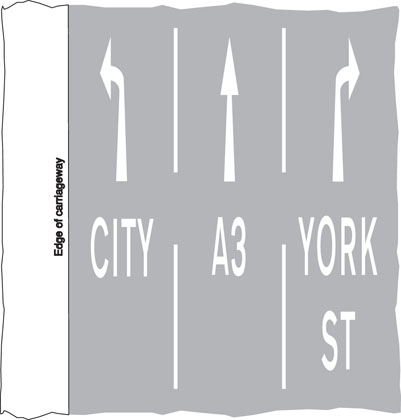
© Crown copyright (Open Government Licence)
As you approach certain junctions, such as roundabouts or motorway exits, you might see large white arrows, road names or major destinations painted on each lane. These are a helpful addition to direction signs and tell you which lane to get in depending on where you want to go.
Slow
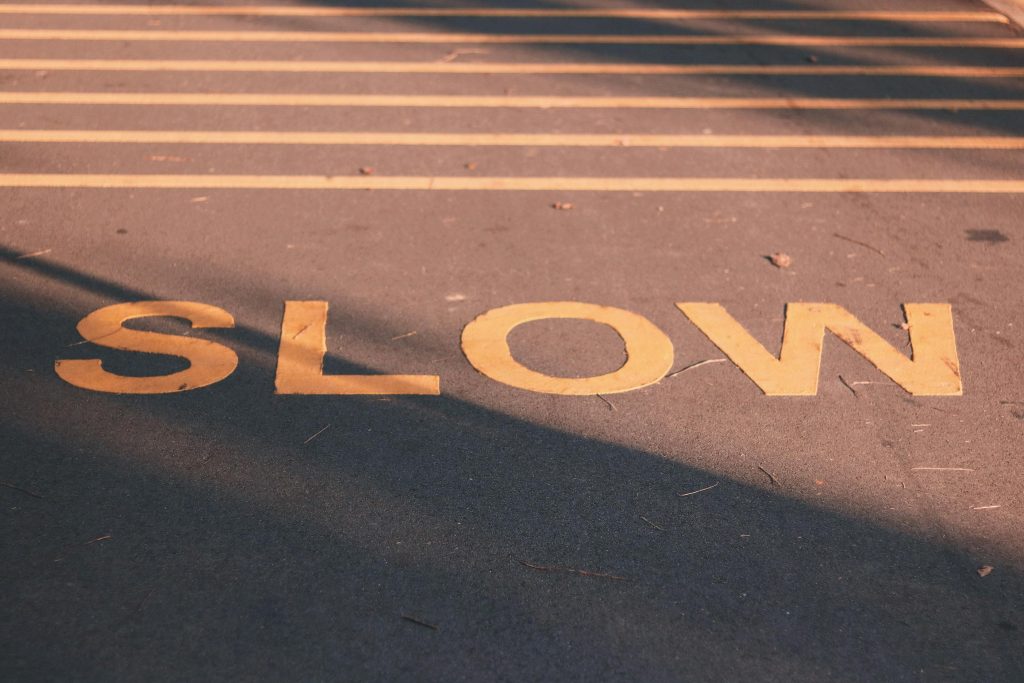
If you see the word ‘Slow’ painted on the road, it means just that: go slowly. You should be able to ascertain the speed limit from road signs or other factors such as lamp posts, but this warning serves as an indication that there are particular hazards at play. Don’t just ignore the writing; adjust to an appropriate speed, given all the circumstances around you.
Keep Clear
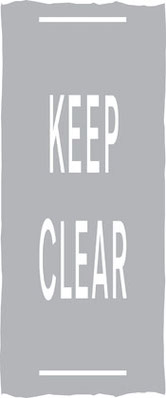
© Crown copyright (Open Government Licence)
Now here’s a message that should be obvious, but often gets flouted by drivers who fail to look ahead or leave a big enough gap between themselves and the vehicle in front. You should avoid stopping on Keep Clear road markings, as you’d be in the way of vehicles trying to turn in or out of junctions.
School keep clear

© Crown copyright (Open Government Licence)
Just like with other Keep Clear markings, you’re not allowed to stop within these lines. And yes, that includes picking up or dropping off children at school.
Bus Lanes
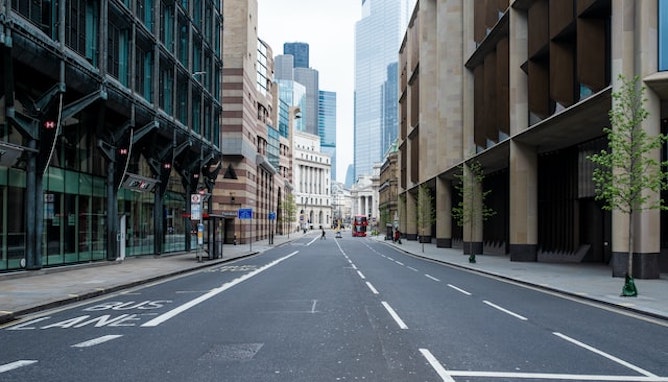
Bus lanes tend to have the words Bus Lane painted on the ground at intervals along them. Some have a different coloured road surface, and they may be separated from all-traffic lanes with a broken or solid white line. Some bus lanes are reserved for authorised vehicles (usually buses, taxis and cyclists) at all times. Others have key operating hours in force: times at which other drivers aren’t allowed to use them, but other times at which they are. To tell the difference, you need to get used to reading road signs as well as markings.
– Outside of operating hours, any vehicle can travel along the bus lane so long as it’s safe to do so.
– Road signs without any times displayed on them mean the bus lane is in operation 24 hours a day. In these cases you may only cross the line if the bus lane line is broken and you need to turn left.
– Otherwise, you should only cross into a bus lane if you need to avoid an obstruction or accident, or to move out of the way of an emergency vehicle. Pull out of the bus lane again as soon as you can.
You can stop in bus lanes—but only if no other parking restrictions prohibit it.
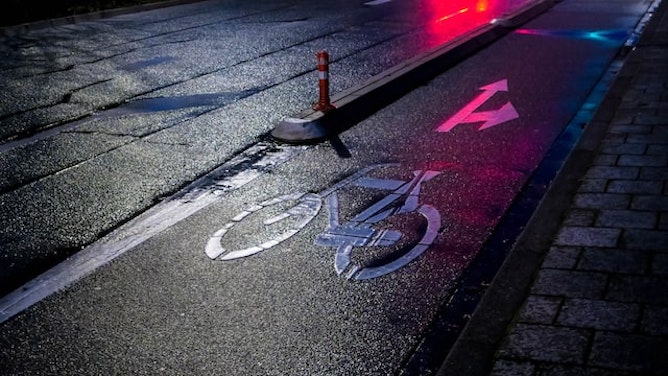
Cycle lanes often have a pedal bike symbol painted on them, and will be separated from other lanes by a broken or solid white line. You mustn’t park in a cycle lane unless there are signs allowing you to do so. Where the cycle lane line is broken, you should not cross it unless it’s unavoidable. If that’s the case, remember to check both your mirrors and your blind spots for cyclists beforehand. You must not cross a solid white line into a cycle lane. If you’re turning and the manoeuvre requires you to cross a cycle lane, give way to anyone biking along it. In other words, treat it as you would any other lane of traffic.
Bus stops
Bus stops are bordered by yellow broken lines, and have the words ‘Bus Stop’ painted within them. You must not park within them, as they’re reserved for buses only.
Yellow box junctions
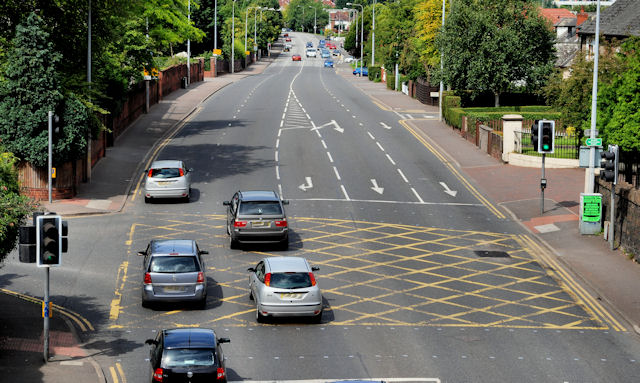
Photo © Albert Bridge (cc-by-sa/2.0)
Yellow box junctions are yellow boxes with criss-crossed yellow lines. They confuse a lot of drivers, so make sure you’re clear on the rules so that you can adapt your driving when you see one coming up.
Turning left or going straight on
If you’re going straight on or turning left, you are not allowed to stop on the yellow hatchings. If you did, you’d be in the path of oncoming traffic — which can not only cause gridlock, but is also a pretty dangerous and scary scenario to be in. To prevent this happening, you may only enter the yellow box if your exit path out the other side of the box is clear. Sometimes this will be obvious, but often, during periods of heavy traffic, it can be difficult to judge. Just check your mirrors, brake and hang back behind the road markings until you’re sure there’s sufficient space for you beyond the road markings and behind the vehicle in front.
Turning right
The only time you’re allowed to stop in the box is if you’re turning right. However, you still need to check that your exit route (the path to the right) is clear. Once it is, drive into position on the yellow hatchings, and wait until there’s a safe gap in oncoming traffic in which to make your turn.
Still confused? We’ve broken it all down in our simple guide to box junction rules.
Chevrons
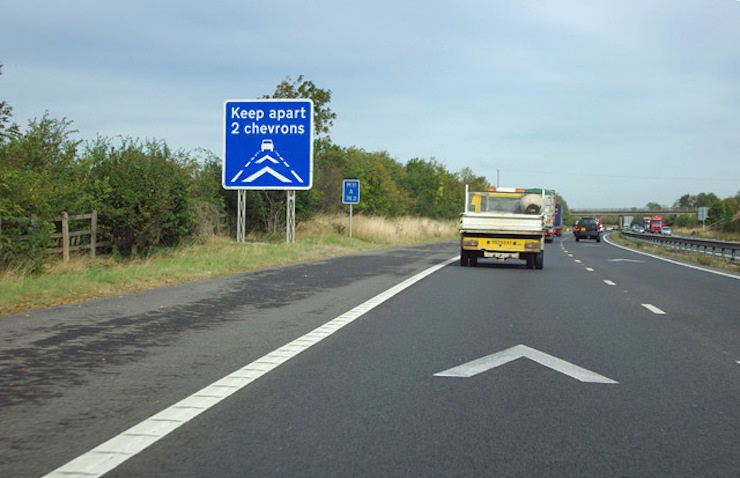
© Robin Webster (Creative Commons CC BY-SA 2.0)
You might come across areas of dual carriageways or motorways with chevrons painted at intervals along the road. These are to help you judge your speed relative to other vehicles, and will usually be accompanied by a sign telling you to keep two chevrons apart.
Speed bump markings
Speed bumps may be a different colour and material, or might have white arrows painted on them to make them particularly obvious to drivers.
